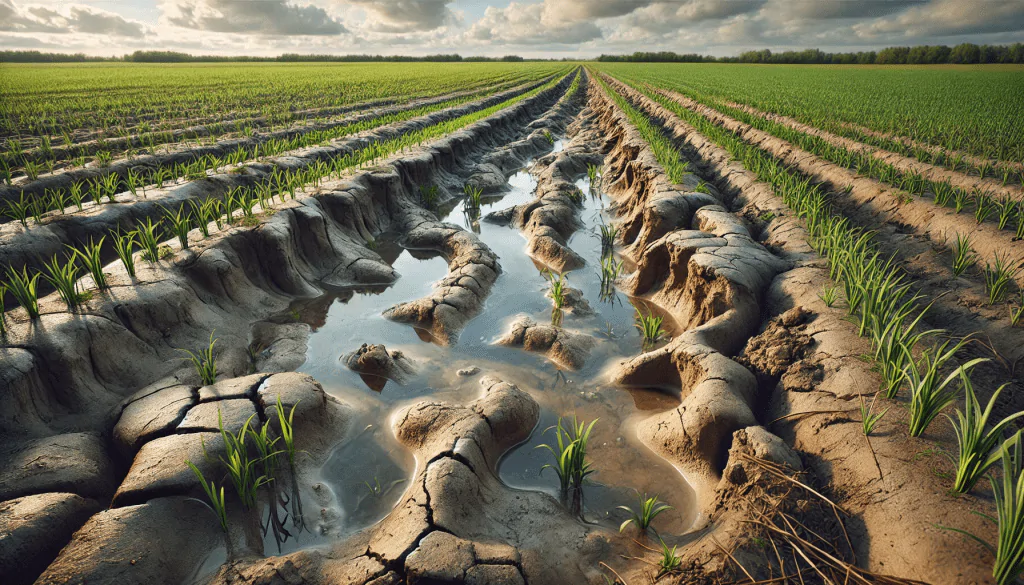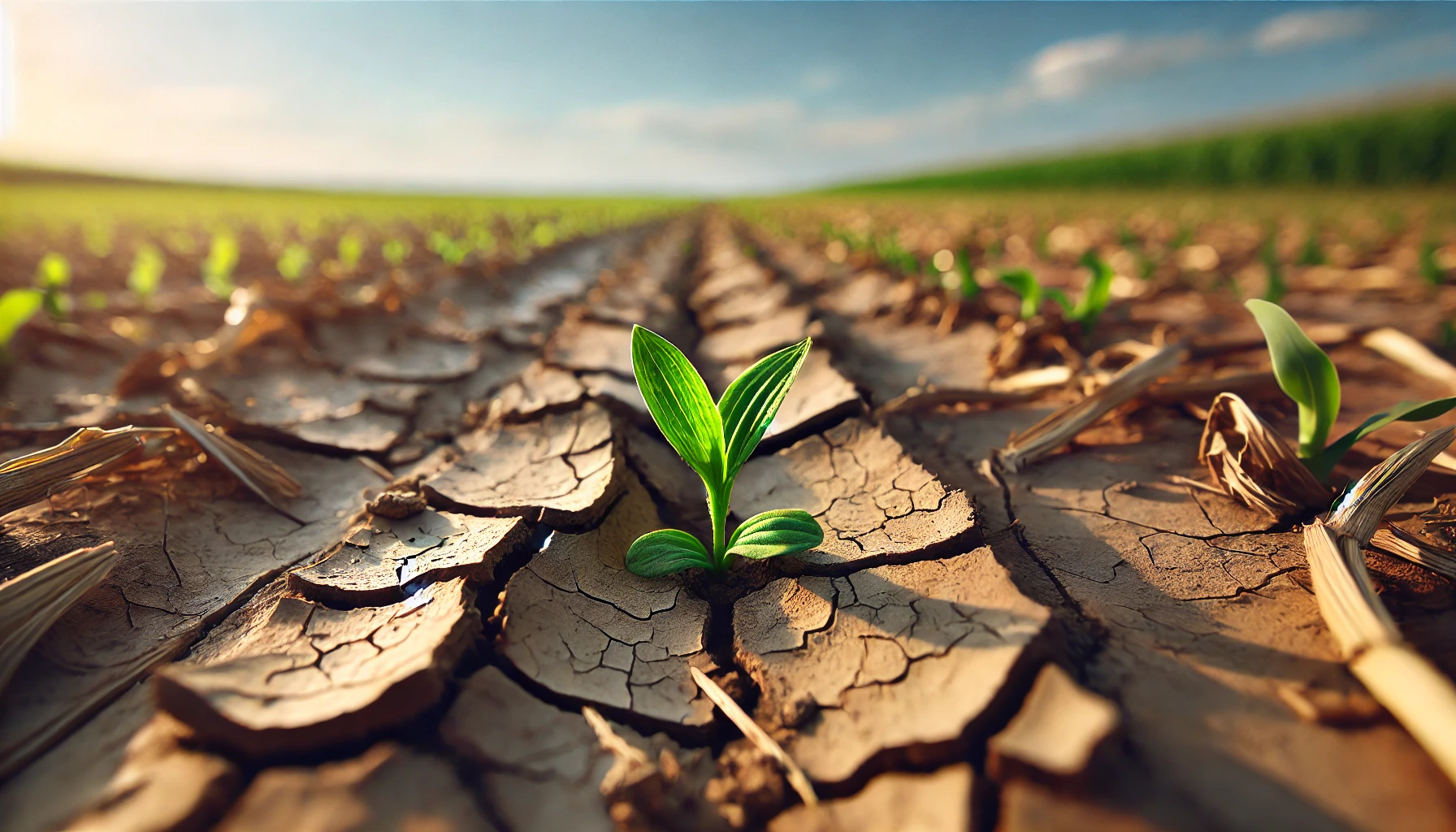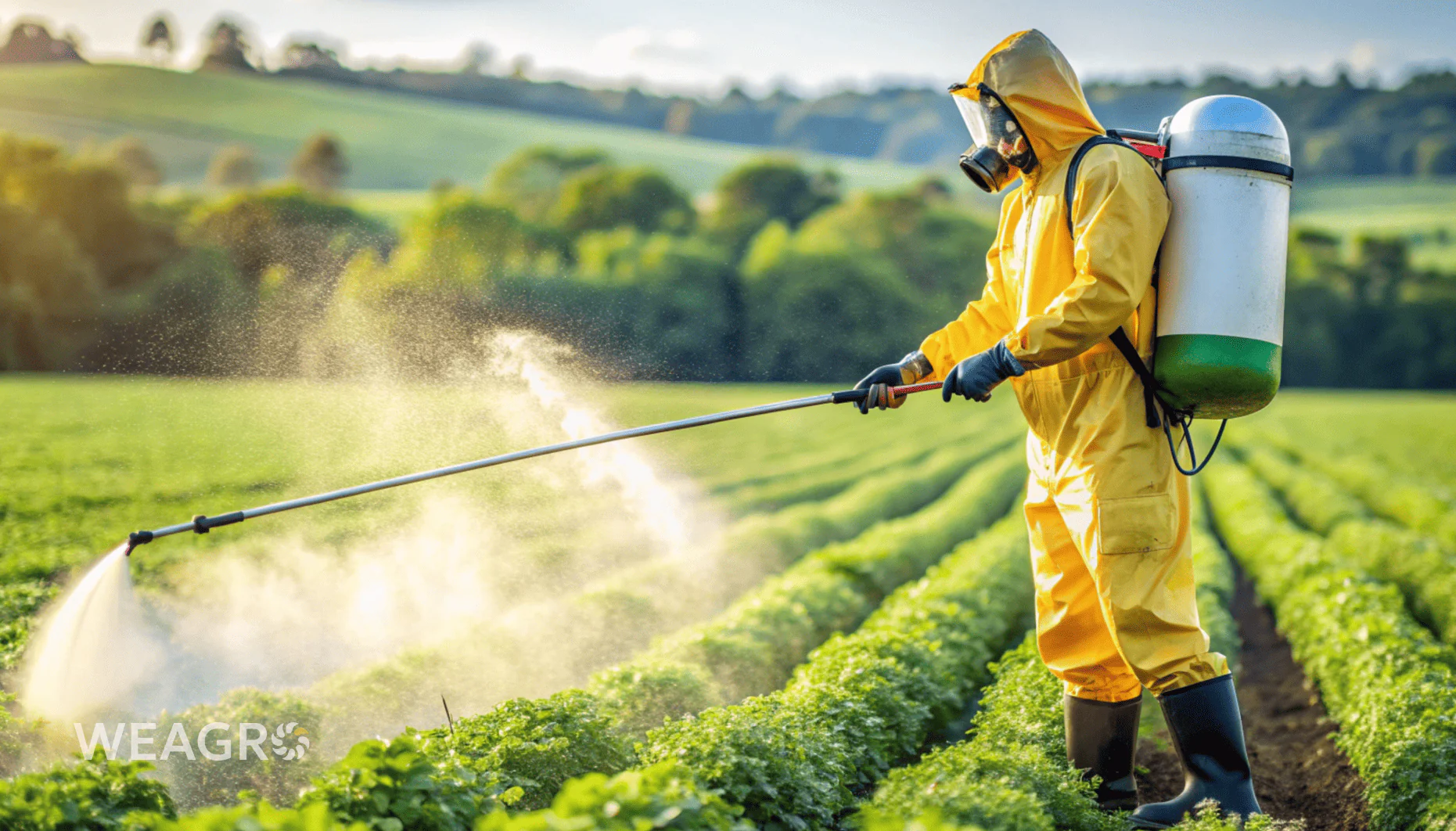Soil erosion is a serious environmental problem that negatively affects land fertility. There are numerous causes of its occurrence, understanding which enables the selection of effective prevention methods and dealing with consequences. A detailed review of all factors is relevant for farmers and other agricultural sector representatives interested in implementing practical solutions to reduce negative events and maintain productivity.
What is Soil Erosion
It is the process of destroying the upper fertile layer under the influence of negative factors – both natural and anthropogenic, leading to deterioration of land condition and, consequently, its gradual degradation. Soil erosion is its gradual thinning, which can lead to loss of fertility. Its appearance is indicated by:
- cracks and ravines;
- changes in soil structure and composition;
- increase in the number of stones on the surface;
These are key signs of soil erosion that indicate depletion of the fertile horizon. By speed of progression, the process can be either natural or accelerated – in the second case, the degradation period is 10-30 years. The problem will only worsen if measures are not taken to address it.

Causes and Types of Soil Erosion
There are both natural factors and those related to agricultural activities. Most soil thinning occurs due to complex negative impacts: nature creates conditions for this, and improper cultivation deepens it. The cause of soil erosion determines its type. Among the most common:
- improper land cultivation;
- soil damage from cattle grazing;
- lack of slope terracing;
- contamination by industrial waste or wastewater – chemical types of soil erosion that not only deteriorate land quality but also destroy it, making it unsuitable for further use and cultivation;
- lack of drainage systems for excess water removal;
- lack of vegetation cover, causing wind erosion;
- annual deep plowing using agricultural machinery, preventing soil recovery;
- excessive use of mineral fertilizers and aggressive pesticides;
- high acidity or alkalinity due to chemical exposure.
Read also: How to Determine Soil Acidity and How to Lower or Increase It
It’s important to understand the causes of different types of soil erosion to take relevant measures for protection and prevention of degradation. Only with a rational approach to agricultural activities can land be protected from destructive processes and yield reduction.
Wind Erosion
Relevant for steppe regions of the country, which are characterized by arid climate and insufficient vegetation, causing soil erosion. The causes of fertile soil layer thinning lie in winds lifting fine particles from the surface, gradually disrupting the ecological balance. Simultaneously, this leads to damage to young plants and blowing away of fine seeds after soil plowing. Erosion can be caused by relatively light winds – up to 5 m/s, when dealing with sandy and calcareous soils without natural grass cover.
Dust storms are also dangerous, capable of destroying future crops. They are particularly harmful to crops such as corn, sugar beets, and sunflowers: early shoots are quite weak, leading to their damage.
Gully Erosion
This is the process of ravine formation on slopes and hills due to water flows. It begins with small washouts that gradually deepen. Its main danger is that not only the top layer will be damaged, but the terrain relief will change overall – washouts and ravines form, making the land unsuitable for use.
Gully erosion is one of the most destructive types, leading to reduction in agricultural land area. Gradually, small streams turn into deep ravines that expand and deepen with each rain.
Water Erosion
Occurs during heavy rainfall, snow melting, or floods, when large water flows wash away the top soil layer. This is one of the most common forms of destruction, which can be:
- surface – eroding the top, fertile layer, reducing its thickness;
- linear – forming depressions and channels, changing the landscape.
Soil erosion due to water action is dangerous not only for destroying agricultural land but also for silting up rivers and irrigation channels.

Snow Erosion
Occurs due to rapid snow melting when meltwater cannot penetrate the soil fast enough and flows over the surface, eroding it. This process is especially active in spring when large amounts of snow cover accumulate on slopes and hills.
Pasture Erosion
Occurs due to excessive cattle grazing in the same area. When large herds of animals constantly occupy the pasture, grass cover becomes depleted, and soil begins to deteriorate under the impact of hooves. Deep erosion leads to loss of fertile soil layer, its compaction, and destruction.
It poses a serious problem on gully slopes: under the mechanical impact of hooves during driving along the same paths, soil slides downward, which is why this type is also called ‘trail erosion’.
Chemical Erosion
Occurs due to the use of aggressive substances or contamination by industrial waste. Soils lose their natural properties, making them unsuitable for growing agricultural crops. Various fertilizers and pesticides can cause increased acidity and leaching of beneficial minerals.
Agrotechnical Erosion
Mistakes in agricultural activities lead to farmers inadvertently destroying their lands. This is technical erosion caused by overly intensive cultivation with special machinery. As a result, soil slides downward and its top layer is destroyed.
Depending on what caused the decrease in land quality, appropriate measures should be taken to address not only the consequences but also the root of the problem. Therefore, it’s important to correctly determine what caused soil erosion. Types are quite numerous, and human activity is often much more destructive than natural factors.
Read also: Precision Farming in Ukraine: Definition and Prospects
Types of Erosion in Ukraine
The estimated volume of black soil is 24 million hectares – about 60% of the area. But despite the fact that the country has 8% of fertile lands worldwide, the agricultural sector loses significant amounts. This is facilitated by natural factors:
- heavy rainfall;
- dust storms;
- strong winds.
Most soil erosion in Ukraine occurs due to crop rotation violations and constant cultivation of soil-depleting crops. According to environmental studies, about one-third of humus has been lost since 1900. It takes about 2000 years to recreate 10 cm of fertile layer.
Depleted soils are easily blown away by wind, causing significant areas to stop bearing fruit. And by rough estimates, careless treatment of natural land resources leads to losses of tens of billions of hryvnias annually.
The war has seriously worsened the situation: chemical contamination has been added to the main types of soil erosion. And after the tragedy at the Kakhovka HPP, the Kherson region will face long-term drought, leading to serious land degradation.
Responsible farming is a key direction in modern agriculture. This involves implementing new approaches that help increase yield without damaging soils in the long term. This requires quality organic fertilizers, as well as modern machinery and equipment that minimizes mechanical damage. For farmers fighting for long-term land fertility, a special online service WEAGRO has been developed. This is advantageous installment payment that allows purchasing everything necessary from verified manufacturers and suppliers with payment deferral. As a result, it will be possible to prepare for the next season on time and start the work cycle without delays.
Consequences of Different Types of Erosion
External factors, as well as human activity, cause serious damage that negatively affects yield and, consequently, the profit received by farmers and the state. Soil erosion destroys the fertile layer and multiple times reduces productivity: nutrients that are so necessary for plant growth and normal development disappear. And this is a threat not only to agriculture but also to the country’s economy and ecology. Soil erosion, its causes, and consequences should not be left unattended. Among the key problems:
- Water body contamination. Under the influence of rains and floods, fine particles settle at the bottom, causing their silting. This affects river inhabitants and other living organisms, leading to gradual population decline. Wind erosion also contributes significantly to this. The consequences of top layer destruction and water body filling lead to excess nutrients entering water systems, which activates rapid algae growth, causes fish death, and is dangerous for humans and animals.
- Soil acidification. Chemical composition change can be caused by various factors, but most often the loss of basic elements such as calcium, magnesium, and potassium is caused by land washing. And fertilizers and pesticides only exacerbate this problem.
- Fertility reduction. Wind erosion causes significant damage. The impact on soil leads to destruction of the top layer and structure, which reduces biological activity of lands, their ability to recover, and aeration. Simultaneously, strong wind gusts destroy young crops – and quality, as well as harvest volume, rapidly decreases.
Read also: Soil: What It Is, Types, and Its Fertility
That’s why it’s so important to understand what soil erosion is, its types and consequences – these are processes that disrupt the ecosystem as a whole. Non-compliance with basic principles of sustainable farming multiplies the consequences of wind erosion, as well as damage from heavy rainfall and snow melting – and previously fertile land becomes unsuitable for cultivation.

Measures to Combat Soil Erosion
While the situation hasn’t become critical, it’s important to take relevant measures to protect lands, as well as change the approach to agricultural activities towards more ecological and safe solutions. To prevent soil erosion, fighting it must be comprehensive and constant – and for this, a whole range of effective methods has been developed that help protect lands from washing away and degradation under wind and water action.
Ways Farmers Can Prevent Erosion
Among the key agrotechnical methods that have gained popularity and proved their effectiveness, several solutions should be highlighted. Soil erosion and measures to combat it:
- minimal tillage – an alternative to deep plowing;
- No-till – complete absence of plowing with mandatory mulching;
- proper crop rotation – alternating different crops to preserve nutrients;
- slope terracing – to prevent water stagnation;
All these are real and accessible ways that can significantly improve the quality and condition of land plots.
Soil Erosion and Ways of Prevention by the State
Several programs have been developed to support farmers, designed to ensure land protection and prevent their degradation. One of the important measures for land resource protection has become the “Life Windbreaks” program, aimed at restoring trees and shrubs that perform a protective function. The role of green plantings in combating soil erosion is very significant, and such initiative will help create reliable barriers against wind and land washing, which is important for preserving their fertility.
Ukraine actively cooperates with the European Union and FAO, receiving financial assistance for development and preservation of the agricultural sector. Currently, share subsidies have been received by such regions:
- Lviv;
- Ivano-Frankivsk;
- Zakarpattia;
- Chernivtsi (certain districts).
Work on the project has been ongoing since 2021, but considering the full-scale invasion, the initial format was changed and adapted to new conditions. And soil erosion, causes of which may lie in chemical land contamination, becomes one of the important directions that allow maintaining agricultural crop exports from Ukraine.
Reduction in fertile land volume poses a serious threat to food security. Besides natural phenomena, significant damage to agricultural lands is caused by chemical contamination, as well as excessive cultivation using corresponding machinery. Development of measures to eliminate consequences, as well as preventing their occurrence in the future, becomes the main tool in fighting erosion.
State support is an important plus, but often it’s not enough. Most often, farmers have to rely exclusively on themselves – and the WEAGRO service provides an opportunity to get favorable conditions for purchasing equipment, sowing materials, and other types of products. Agro-installment is an opportunity to make purchases with payment deferrals on special terms. It can be arranged without additional documents, complications, or hassle – online and with decision-making up to 30 minutes.









